The Group of Underwater Archaeology of the Universidad Autónoma de Yucatán
|
Spanish version
With the purpose of forming professional archaeologists trained and specialized in the methods and techniques of underwater archaeology the Group of Underwater Archaeology of the Universidad Autónoma de Yucatán (UADY) was officially founded in the Faculty of Anthropologic Sciences (FAS) in august of the year 2001. This group was created by the archaeologists Guillermo de Anda who immediately started training a group of students in underwater rescue techniques and general diving capacities. The goal of the program is that the students obtains the certifications of open water diver, advanced diver, cavern diver, cave diver, underwater archaeological methods and techniques and further grades.
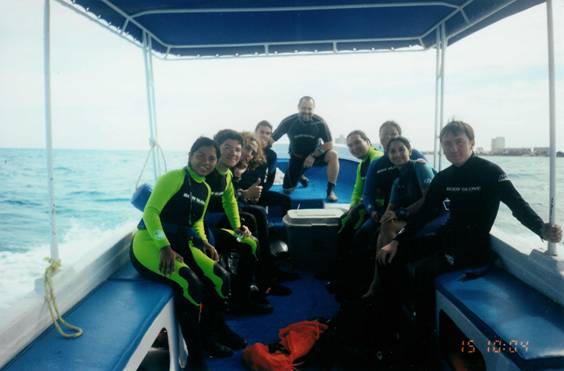
Photo 1. The pioneer group in an open water practice in Cancun.
From the moment of foundation the group got the full support from FAS and UADY. All of the pool exercises are realized in the installations of the Faculty of Medicine and also medical and psychological exams on the first group of students followed within the facilities of the same institution. The exams consisted of questionnaires applied by psychologists, exercises of physical resistance and elastics, checks on pulmonary capacity and anthropometrics. And the end every participant received a special dietary plan and a program of exercises which need to be practiced and constantly supervised.
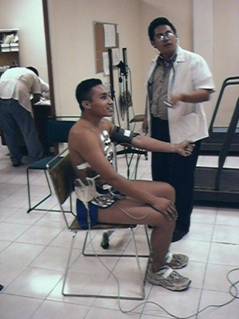
Photo 2. The group members are subject to medical check outs before starting their diving education.
In January of 2002 the group was officially introduced to the public on a press conference held by a local diary. The session joined by reporters and interested people in general counted with the presence of then FAS director Francisco Fernández Repetto, the coordinator of the group, Guillermo de Anda and Dominique Rissolo, (DR) in archaeology by the University of California at Riverside. It was on this occasion that, a half year after the foundation, the first training results of the group were published.
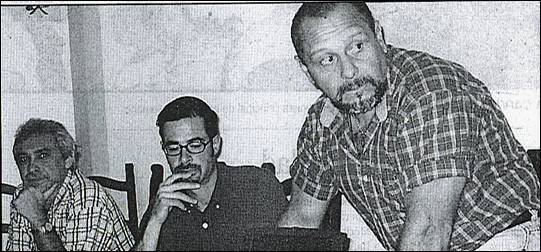
Photo 3. Press Conference to inform about the creation of the specialty at UADY’s anthropology school.
The first team of students is integrated by BS. in History Diana Gutierrez, a group of graduates in Archaeology of the generation 1999-2003, and the author of this article, graduate in Archaeology of the generation 2001-2005. The second team, which started the training program in 2004, is composed of a group of three students of Archaeology of the generation 2002-2006.
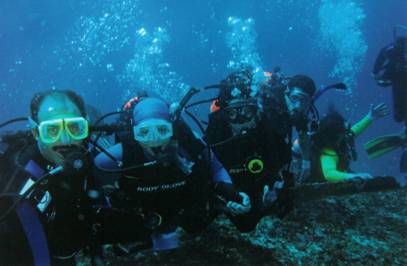
Photo 4. Members of the first generation diving in a shipwreck in Cancún.
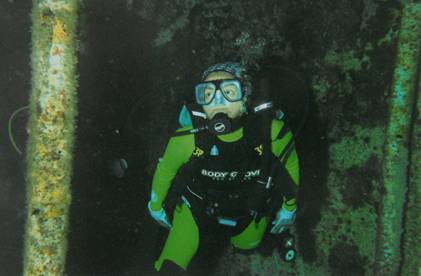
Photo 5. Inside the shipwreck.
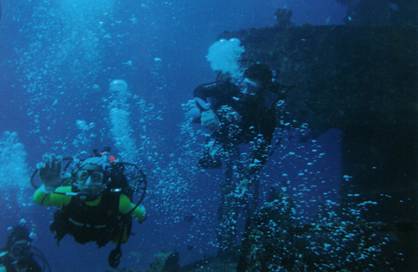
Photo 6. Going out the shipwreck.
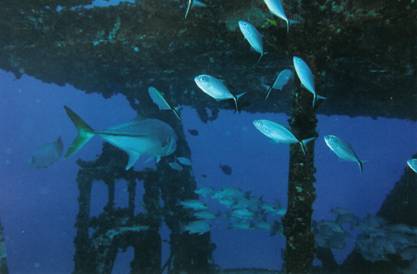
Photo 7. A view from the main deck.
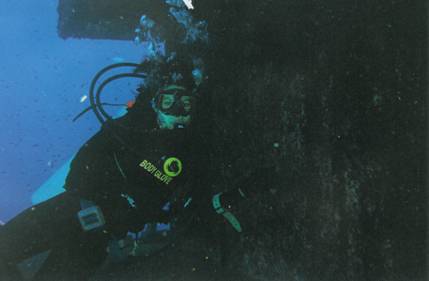
Photo 8. Inspecting the hull.
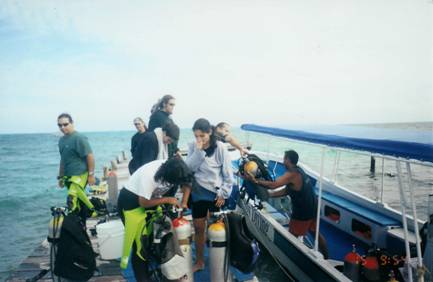
Photo 8. Coming back from a dive.
The group participated in a number of investigations mentioning here the archaeological report of the cenote Xcanyuuyum at the archaeological site of Chichén Itzá in October of 2001, the rescue of prehispanic material in the cenote Tza-Itza in July of 2002 and another archaeological rescue in the cenote Uiitzam in august of 2002. At this moment the members of the group are engaged promoting the discipline including in their plan of activities a series of conferences and a photographic exposition at the Semana de Antropología (Week of Anthropology) at the FAS at the end of October of 2003 and a presentation of archaeologist Guillermo de Anda at the Encuentro de Investigadores de la Cultura Maya (The Meeting of Investigators of Maya Culture) in Campeche, Camp. in November of 2003, etc.
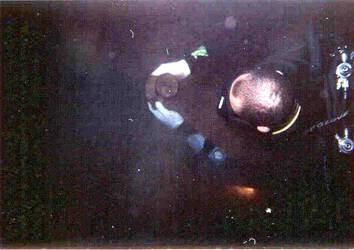
Photo 10. Recovering archaeological material from a cenote. (Collaboration with the INAH Center in Yucatan).
Every one of us archaeologists would agree about the best way to study artifacts is having direct access and the control excavating them. Analyzing archaeological remains that are part of poorly contextualized museum collections or which have been recovered by third person is an often difficult if not impossible process. For this it’s an obligation for every scholar who wants to do underwater archaeology to get a divers license. But when somebody is achieving his o her first diving certificates he is still not trained to do realize special tasks in the water. The process of training and specialization is than something that would be under better control and vigilance if there was a group formed step by step at a university. It is here where underwater archaeologists raise whose work is a conscious and professional application of specialized archaeological methodology. Yucatán is the proper field to establish this kind of school. The state’s number of cenotes added to the extended shore line holds for a big amount of submerged archaeological data.
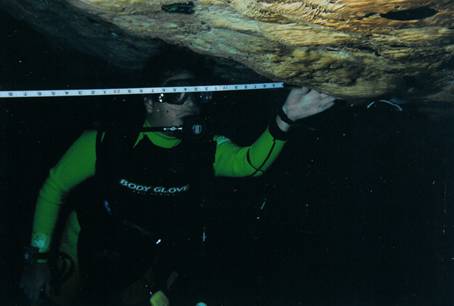
Photo 11. Alejandro Perez mapping a cenote.
Actualization – Activities in the first semester of 2004.
Since November of 2003 until the publication of this article there has been a series of activities realized by the members of our group of underwater archaeologists. One of the events worth mentioning is the prospection of two cenotes with the help of a ROV (remote operated vehicle). This exercise was thought to procure us with an appreciation of the singular characteristics of some deeper cenotes and to check the possibility of a broader program including the use of ROV and was made in conjunction with the Ecology Department of the State of Yucatan and UADY. The ROV and all of the equipment necessary for it to run were brought to Yucatan by Promare, an organization of underwater investigation (www.promare.org), in conjunction with the Institute of Nautical Archaeology (INA) of Texas A&M University, and the collaboration of experts in maritime archaeology technology such as Professor Marek Jasinsky and Professor Frederic Soreide from the Norwegian University of Science and Technology, and Dirk Rosen from Deep Ocean.
The immersions were documented by Kristin Romey, reporter of Archaeology Magazine (www.archaeology.org). The article published in the May/June edition of 2004 treated no only on the ROV-project but also on show our group in other dives and locations.
The cooperation and support of ProMare through technology and funding has been fundamental for the development of the underwater archaeology group of our university and we acknowledge and thank their support through this web page.
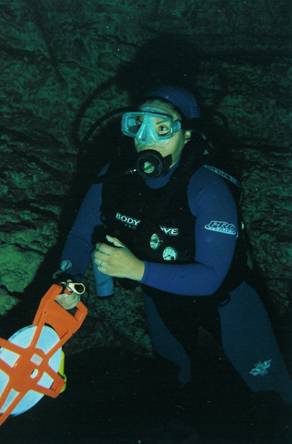
Photo 12. Victoria Rojas during the course of underwater archaeology methods and techniques.
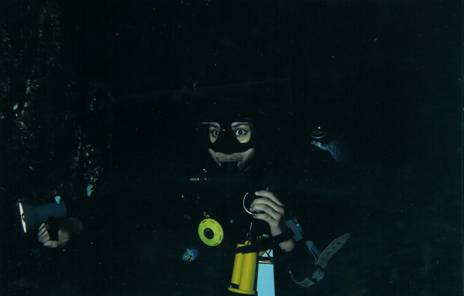
Photo 13. Diana Gutierrez during the exploration of a cave.
During the 2004 expedition sponsored by ProMare we realized that ROV´s could be of great help in our deep and more inaccessible cenotes due to the fact that this artifacts can go deep in the water causing a minimum impact to the environment and specially to the archaeological material contained within however we recognized that the ROV´s used in maritime activities could not been ideal for our environment. As a result of the latter ProMare and UADY are working now in a joint effort for the design and construction of a native ROV that could be ideal for the work in the Yucatan State. The ROV can then be a great aid not only for the underwater archaeology group but also for other underwater research groups in our university such as the one in the Biology school. We expect that this could be a reality by the fall of 2006 and will be reporting trough this page about the advancements of these efforts.
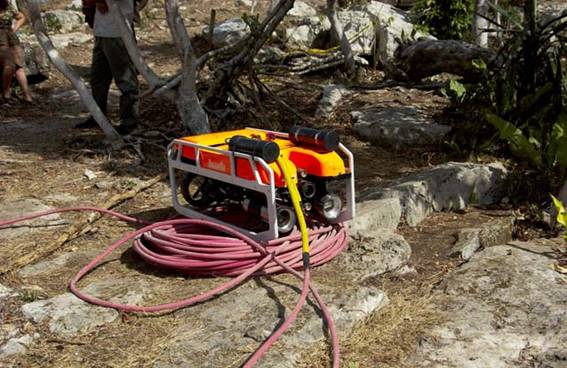
Photo 14. The “Trigger Fish” the ROV used during the 2004 expedition.
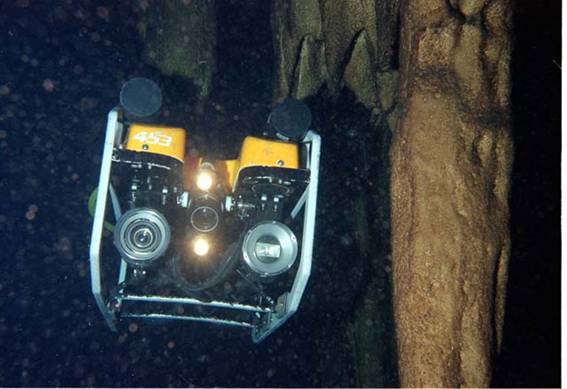
Photo 15. The “Trigger Fish” in action.
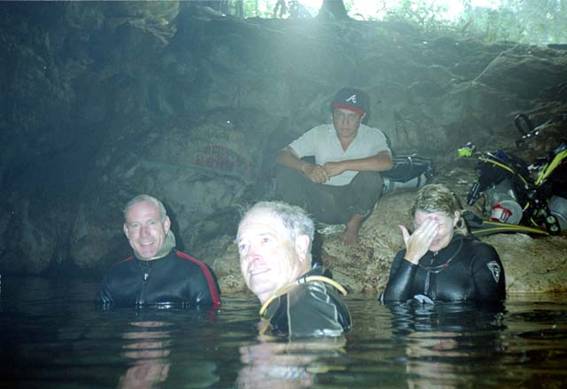
Photo 16. Mister Gregg Cook from ProMare, Joe Ballew and Melisa French on the 2004 expedition, Pedro Tun one of our assistants is in the back of the photo.
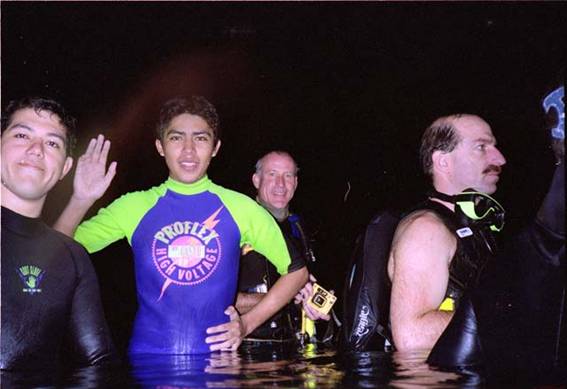
Photo 17. Gabriel Ortiz Alatriste and Renan Rejon Piña, two of the students in charge of filming the expedition, Gregg Cook from ProMare, and Deep Ocean´s Dirk Rosen.
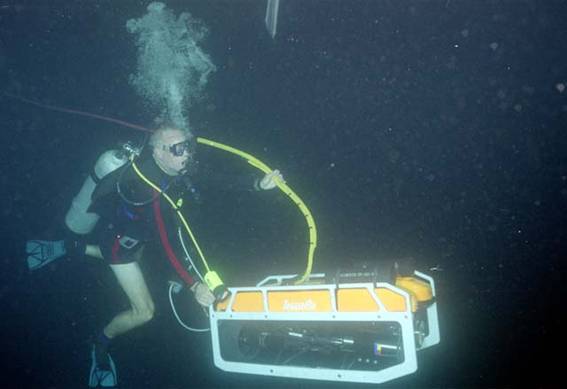
Photo 18. Gregg Cook from ProMare checking on the “Trigger Fish”.
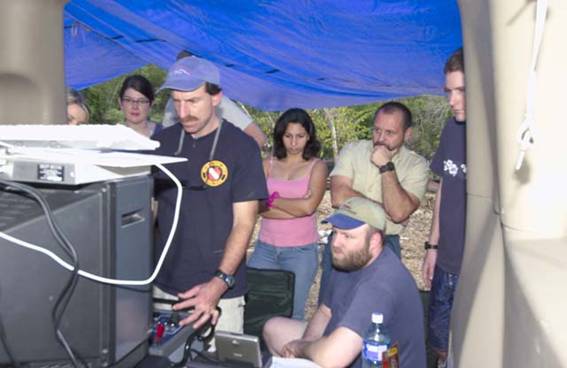
Photo 19. The ROV control center (Dirk Rosen and Brett Phaneuff in the first row).
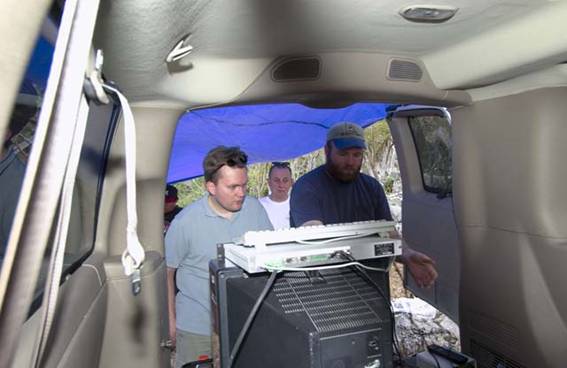
Photo 20. Frederick Soreide and Marek Jasinsky from the Norwegian University of Science and Technology, and Brett Phaneuff from ProMare in the control center.
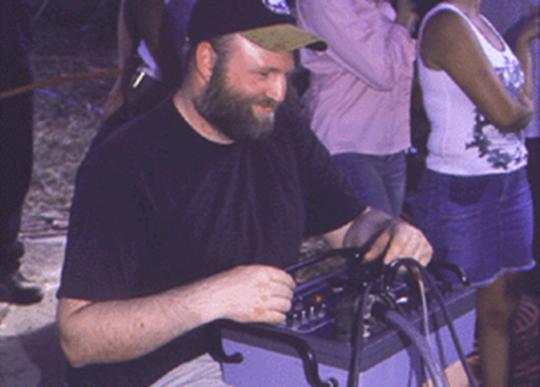
Photo 21. Brett Phaneuff from Promare in control of the “Trigger Fish”.
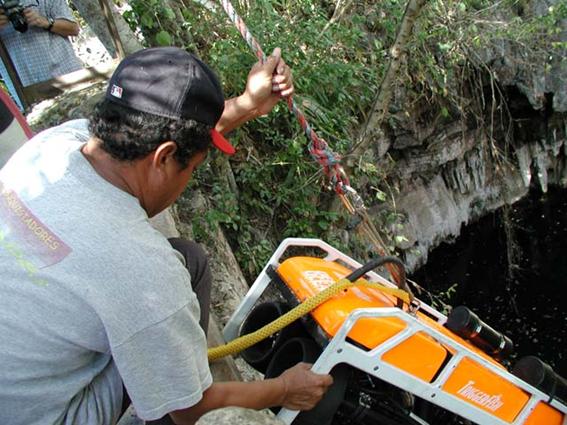
Photo 22. Pedro Tun helping to download the “Trigger Fish”.
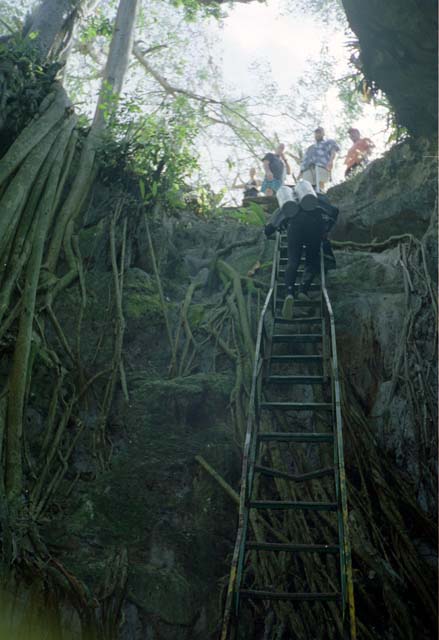
Photo 23. Gregg Cook and Brett Phaneuff from Promare watch a diver going down for a check out dive.
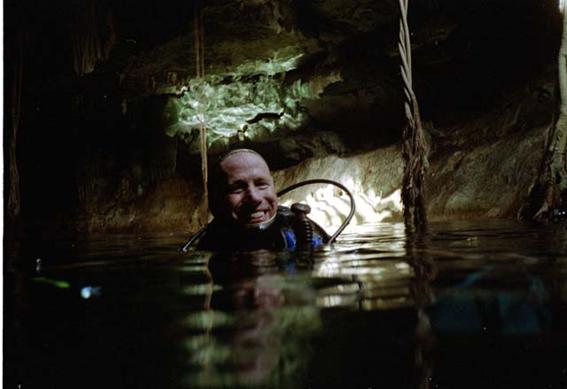
Photo 24. Gregg Cook from ProMare, happy after a good dive.
Spanish version

























